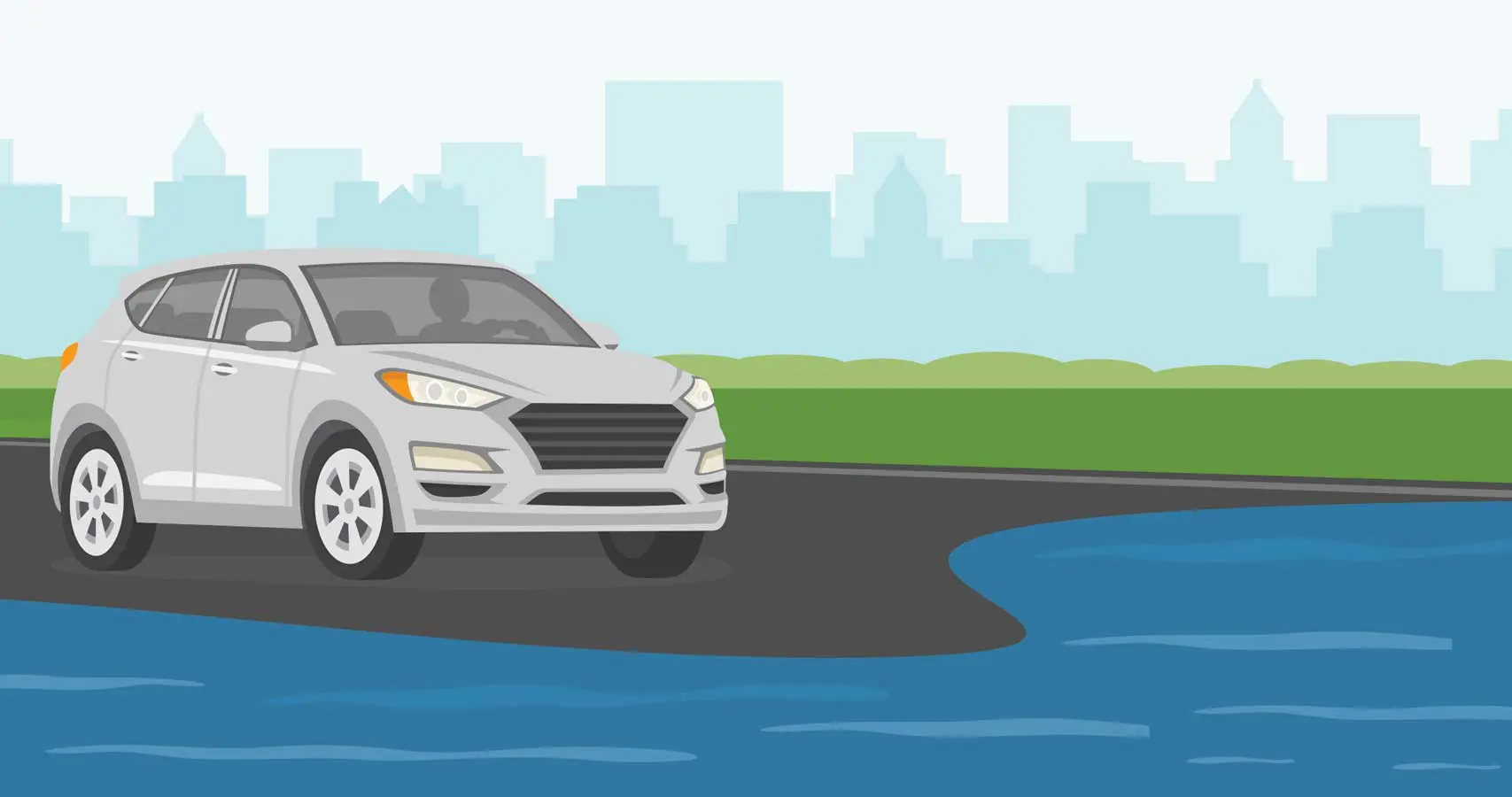Flooded Areas: Steer Clear
By MS. CHRISTINE WALSH, STAFF WRITER
Flooding can happen from excessive rain or snowmelt. Although some floods develop slowly, flash floods can happen within minutes after a storm or containment system break.
According to the National Weather Service (NWS), an average of nearly 100 people drown annually in floods. The Centers for Disease Control and Prevention (CDC) reports that more than one-half of these deaths were due to motorists attempting to drive through flooded roads. Many of the deaths happened in automobiles that were swept downstream.
The dangers of driving through floodwater include hydroplaning and losing control, the vehicle being carried away, the vehicle becoming submerged, and the roadway collapsing.
What should you do if you start to skid on wet pavement?
“Always remain calm when a car is skidding to help regain control,†says Laura Myers, director of the Center for Advanced Public Safety at the University of Alabama. “Slowly remove your foot from the accelerator and carefully steer in the direction you want the front of the car to go. Keep steering until the car is straight and you regain control of the car. If the car has antilocking brakes (ABS), brake firmly while steering into the skid. If the car does not have ABS brakes, do not use the brakes, just steer until you regain control.â€
University of Manitoba thermophysiology professor Gordon Giesbrecht said his cardinal rule is simple: Never drive into floodwater. “It can wreck the electrical system and total your car,†he said. “More importantly, you can drown.â€
Although driving through floodwater is not advised, Myers said it is a mistake to not prepare for it. “It can happen quickly and at any time,†she said.
In addition, Myers said that salt water and mud can cause rust and erosion on the undercarriage, so it should be cleaned after driving through floodwater. She added that a wet engine should be allowed to dry and be checked by a mechanic.
Pay attention to water levels—6 inches of water is enough to reach the bottom of most cars and cause loss of control and stalling. A foot of water will float most vehicles, including pickup trucks and sport utility vehicles, and 18 to 24 inches will force most vehicles off the road, according to the National Oceanic and Atmospheric Administration (NOAA).
“Once it floats, any current will push the vehicle off the road into deeper water, and your car will sink,†Giesbrecht said.
During threatening conditions, do not camp or park your vehicle along streams and creeks because they can rise very quickly during heavy rains. Never drive around a barricade; roads and bridges may be washed out or structurally unsound.
The NWS advises monitoring NOAA Weather Radio or a local radio or television station for weather-related information. Myers also advises having a way to get alert notifications, especially in the car while driving.
Myers noted that water causes more fatalities than any other weather risk and said that people often mistakenly believe that they and their vehicle can handle it.
“Research indicates that people caught in floodwaters rationalize their actions with responses like the following: ‘It is the only way to my home or work;’ ‘I could not be late to work or school;’ ‘I had to get to my children;’ ‘I have a high vehicle that can handle water.’â€
But what if you cannot turn around or take an alternate route?
“If you do drive through floodwater, drive very slowly to try and keep the water out of the exhaust pipe and the front end of the car,†Myers said.
If possible, move to the center of the road, which is usually graded higher than the edges. Do not drive through water where there are downed power lines. Look for debris traveling downstream that could trap or crush you. If you have driven through water up to the wheel rims or higher, test your brakes on a dry area of road at a low speed. If the brakes are wet, dry them by pressing lightly on the brake pedal with your left foot while maintaining speed with your right foot.
And what if your vehicle stalls and you become trapped?
“If the car stalls in floodwater, and the water is swift and/or high, getting out of the vehicle may be hazardous,†Myers said. “You can try to restart the engine, and it may cause damage to the engine, but that may be the better choice if the car and driver need to get to safety.â€
But if you are overcome by rapidly rising water, Giesbrecht said you should follow the acronym “SWOCâ€: seat belts off, windows open, out immediately, and children first. “Try to get on the roof and assess how deep the water is and if there is any current,†he said.
If there is not a current, Giesbrecht said you can consider walking along the road to safety. “If you are floating and moving with a current, you will have to figure out where the safest spot is,†he added.
The second highest percentage of flood-related deaths are due to walking into or near floodwater. Even a 6-inch-deep stream of moving water can cause you to fall. If flooding does happen, the NWS recommends going to higher ground and avoiding areas such as drainage ditches and canyons. You should not try to cross flowing streams, especially if the water is moving rapidly.
The CDC recommends gathering emergency supplies such as food and water during flood conditions.
You should be particularly careful at night, when it is harder to see flood hazards. If you need to evacuate, secure your home, disconnect appliances, and if possible, turn off utilities at the main switches or valves if instructed to do so, but do not touch electrical equipment if you are wet.
In addition to presenting traffic safety issues, floodwater can be dangerous because it may contain snakes and insects, sharp objects, petroleum products and industrial waste, or raw sewage.

